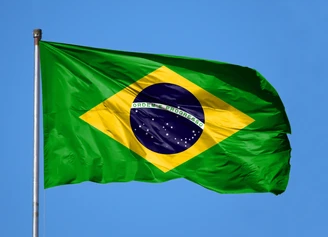If you’ve ever watched a British movie or TV show, you’ve probably seen the Union Jack. It’s the United Kingdom National Flag, and it’s one of the most recognizable flags in the world. But what is the Union Jack, and what does it represent? In this article, we’ll take a closer look at the history and meaning of the United Kingdom’s national flag.
The Union Jack, also known as the Union Flag, is a combination of three different flags: the flag of England, the flag of Scotland, and the flag of Northern Ireland, making it a true representative of the UK. It was first created in 1606, when England and Scotland were unified under King James VI of Scotland and I of England. At that time, the flag of England was a red cross on a white background (known as the St. George’s Cross), and the flag of Scotland was a white diagonal cross on a blue background (known as the St. Andrew’s Cross). The Union Jack combined these two flags by placing the St. Andrew’s Cross on top of the St. George’s Cross.
Design and Colors of United Kingdom National Flag
The Union Jack has a distinctive design and color scheme. It’s made up of three overlapping crosses: a red St. George’s Cross, a white diagonal St. Andrew’s Cross, and a red diagonal St. Patrick’s Cross. The red in the flag represents England, the white represents Scotland, and the red diagonal cross represents Ireland. The blue background of the flag is not represented by any of the crosses, but it is associated with Scotland. Thus it covers the whole of the UK.
Meaning and Symbolism
The Union Jack is more than just a flag; it’s a symbol of the United Kingdom and its history. The three crosses represent the three countries that make up the United Kingdom: England, Scotland, and Northern Ireland. The Union Jack also represents the long history of the UK, including its colonial past. During the height of the British Empire, the Union Jack was flown all over the world as a symbol of British power and influence.
Controversy and Debate
Despite its long history and widespread use, the Union Jack is not without controversy. In recent years, there has been debate over whether or not the flag should be updated or replaced. Some people argue that the flag no longer represents the diverse and multicultural nature of the United Kingdom, while others argue that it should remain unchanged as a symbol of tradition and heritage of the UK.
Proper Display and Etiquette
If you plan on displaying the Union Jack, it’s important to follow proper flag etiquette. The flag should always be flown in a position of honor, and it should never touch the ground. When the flag is raised or lowered, it should be done slowly and ceremoniously. It’s also important to note that the Union Jack should never be flown upside down, as this is a sign of distress.
Frequently Asked Questions
- What does the Union Jack represent?
The Union Jack represents the United Kingdom and its history, including its colonial past.
- When was the Union Jack first created?
The Union Jack was first created in 1606, when England and Scotland were unified under King James VI of Scotland and I of England.
- What are the colors in the Union Jack?
The red in the flag represents England, the white represents Scotland, and the red diagonal cross represents Ireland.
- Why is Union Jack controversial?
There has been debate over whether or not the flag should be updated or replaced, with some arguing that it no longer represents the diverse and multicultural nature of the United Kingdom.
- What is proper flag etiquette for Union Jack?
The flag should always be flown in a position of honor, and it should never touch the ground.
References
- “Union Jack”, The Royal Household, https://www.royal.uk/union-jack-and-royal-standards (accessed April 18, 2023).
- “United Kingdom – Flag”, Britannica, https://www.britannica.com/topic/flag-of-the-United-Kingdom (accessed April 18, 2023).
- “What is the Union Jack and why does it look like that?”, BBC, https://www.bbc.com/news/uk-politics-18580390 (accessed April 18, 2023).

